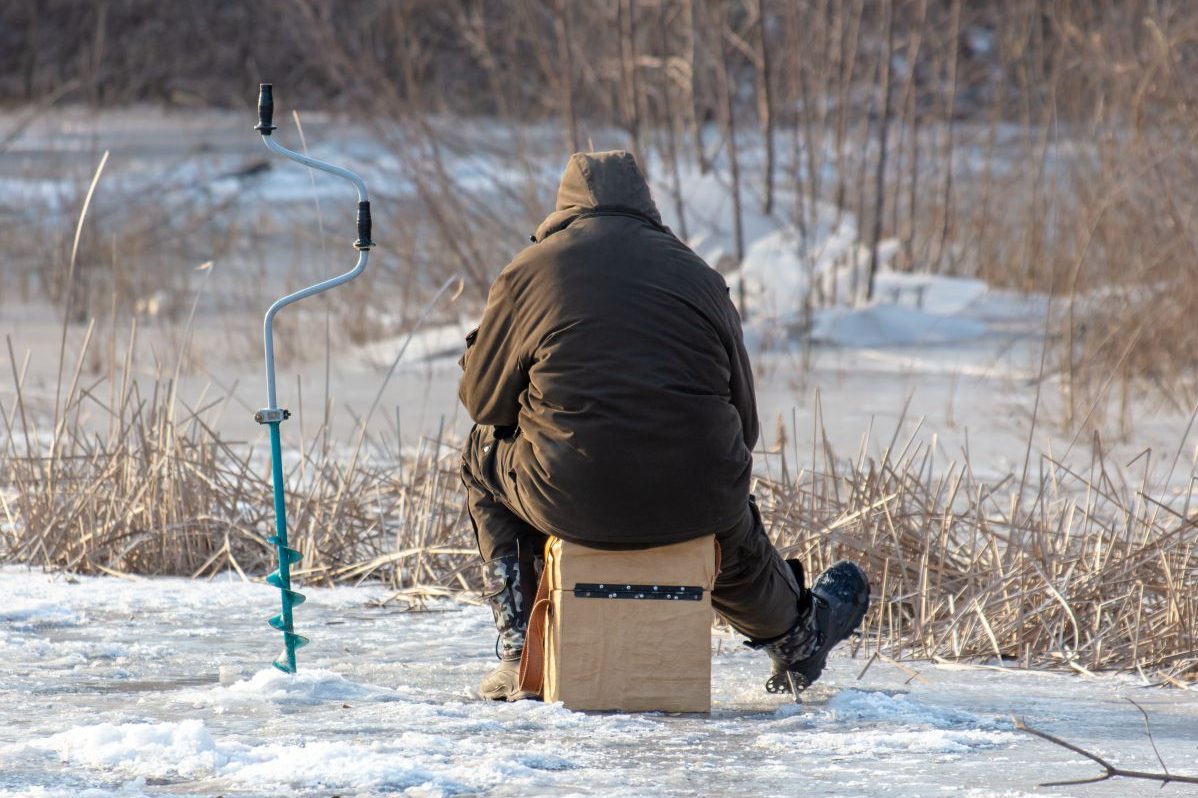Early Ice Fishing Tactics

Early Ice Fishing Tactics
At the time of this writing, Mother Nature had given Iowans a taste of what is to come. Daytime temperatures were peaking in the lower sixties and upper fifties, and northern reaches of the state saw nighttime temps dip to the mid-thirties. Ice anglers began contemplating the coming season.
Safety First
Before we dive into the whens and wheres of early ice, let’s take an all-important look at ice safety. It’s been said many times before, but there really is no ice that can be called “safe ice”. We have seen and heard all too often of anglers who succumb to ice fishing accidents all across the ice belt.
As temperatures cool and ponds and lakes begin to ice over, the thickness can vary. Use a spud bar as you walk onto the ice, testing the surface. Strike the ice firmly with a spud bar twice in the same location, and if the integrity of the ice remains solid, you’re safe to step to that location. Also, never go alone, wear a PFD, and take a length of sturdy rope that can be used to help pull you or your fishing partner to safety. Let someone know where you are fishing and when you are expected to return. It’s always better to err on the side of caution than not.
Location
Now that we’ve covered some of the ice fishing safety basics, we can look at where to fish as ice forms on many of Iowa’s water bodies. Ponds and small lakes will typically ice over before any of the larger bodies of water we fish. When there is sufficient ice thickness on ponds, these are excellent places to start your ice fishing season. Typically, the weed beds are still in excellent shape, and bluegill and crappie will find their forage there. Ponds always have an area where the overflow drains into a small creek.
Look for this area from a distance; the ice will be thinner where water flows. Work your way out about 30 feet, find weedbeds, and start punching holes. Use your electronics and fish at various depths until you find the active fish. If you’re standing on relatively clear ice, you can pour some water on the ice and place your transducer in it. Fire up the electronics, and you’ll be able to “see” what’s below and mark fish that are suspended. That’s where you want to start!
On larger bodies of water where ice thickness can accommodate an angler, shallow areas containing healthy weedbeds are the key, and that’s where you can start searching for early ice crappies and bluegills.
Bluegills more than likely have been migrating toward shallower water since the dog days of summer came to an end. Cooler water with good shallow weed beds are tolerable for bluegills. Right before ice up, they should be there en masse. Crappie prefer water that is slightly cooler than that of bluegills. Still, they will soon follow as temperatures begin to drop.
Along with the weed beds, especially if you’re looking for crappie, look for a feature with an inside turn of a hook or bend. The fish are looking for cover and forage. First ice is the best chance you have at finding standing weeds with active fish.
With the advent of modern technology and its portability, we can take what we’ve learned and know while fishing open water and apply it to the ice fishing season once that comes along. Early season open water fishing provides you with great detail and information on where those fish will likely be as lakes and ponds ice up. Waypoints and marks on maps can lead you right back to areas where you succeeded during open water and be just as productive during early ice.
Ice Fishing Tackle
For crappie and bluegill, light line, medium-light to ultra-light rod and reel combinations, and small jigs are going to be the preferred method of chasing after these fish. Short 26 to 28-inch ice rods will do the job very well. As the ice fishing season draws near, there will be a plethora of new ice fishing gear coming from your favorite manufacturer. Clam Outdoors certainly is one of the most common names you’ll hear, and they have introduced some amazing products over the years. One of my favorites and a go-to standard is the Spooler Elite reel. These new designs keep your line from coiling, which induces a spin as you deploy your jig. Pair these up with light line and tungsten jigs, and you’ve got a well-matched ice fishing setup. These are not the total solution, but for panfish, they can’t be beat.
Tungsten jigs have all but become the norm for panfish. They weigh more than lead, and you can get them back to the fish, especially if you’ve found a very active and hungry pod. Like rods and reels, they come in a variety of sizes and can be tipped with a plastic that imitates small fish or live bait, such as wax worms or spikes (maggots). Spikes can also be found in a variety of colors, and for me, red has truly been an effective color.
If you’re like me and already have an assortment of reels, you’ll want to do some pre-season maintenance. One bit of advice that I once got from Dave Genz was to replace the first 50-60 feet of line on your reels. We’ll all start off loading a new reel with 100 yards of line, but rarely, if ever, go beyond that 60-foot range. This will save you extra time on replacing the line and, in the long run, some cash too.
Remember that there is no fish, ever, out there worth risking your life for. Check and recheck ice conditions as you head out. Snow will act as an insulator and create spots of weaker ice. Never walk out onto a new body of water without the proper safety equipment.
Early ice fishing can be some of the most productive and action-filled days of the season. As you venture out, ensure that the only footprint you leave is from your shoes. Pack out what you pack in, and if you see something there that someone else left, pick that up too. Stewarding the resources we share will ensure that our kids and grandkids will enjoy them long into the future. Tight Lines All!
by Ben Leal
November 2025
Here are some great tactics for ice fishing
Or if you are looking for the digital version of this months issue here it is below
Looking for the Cattle/Dairy side of things

